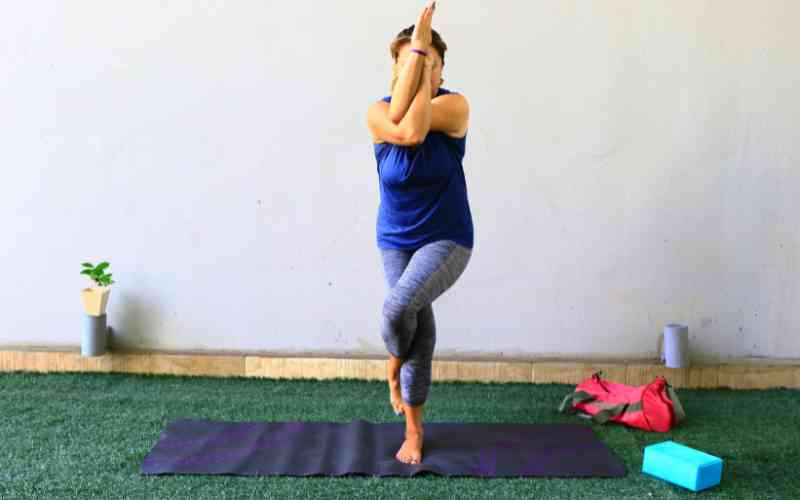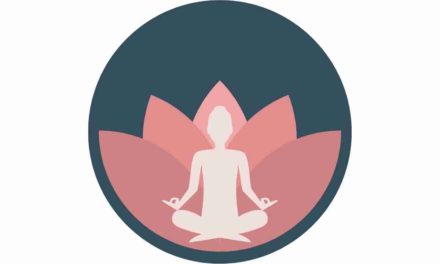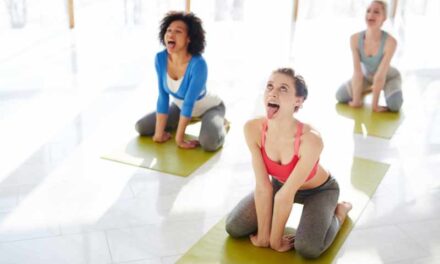Garudasana, or Eagle Pose, is a standing pose that is part of the Hatha yoga tradition. This pose requires strength, balance, and focus, and it offers a wide range of benefits for the body and mind. In this blog post, we will explore the various aspects of Garudasana, including its benefits, variations, and how to practice it correctly.
The benefits of Garudasana
Garudasana is an excellent pose for building strength and flexibility in the legs, hips, shoulders, and arms. It also helps to improve balance and stability. This pose is particularly useful for those who spend a lot of time sitting or standing, as it helps to release tension in the body and improve circulation. Some other benefits of Garudasana include:
- Improved concentration and focus: This pose requires a high level of concentration and focus, which can help to improve your mental clarity and focus.
- Increased range of motion: Garudasana helps to stretch and strengthen the muscles in the hips, shoulders, and legs, which can increase your range of motion and improve your overall flexibility.
- Improved digestion: The twisting motion of Garudasana can help to stimulate the digestive system, which can improve digestion and relieve constipation.
- Reduced stress and anxiety: This pose can help to calm the mind and reduce stress and anxiety levels.
- Improved circulation: Garudasana can help to improve blood flow and circulation, which can reduce the risk of developing varicose veins and other circulatory problems.
Variations of Garudasana
There are several variations of Garudasana that you can try depending on your skill level and flexibility. Some of these variations include:
- Half eagle pose: This variation involves crossing one leg over the other and wrapping one arm under the other, without fully sinking down into the pose. This is a good option for beginners who are still working on their balance and flexibility.
- Full eagle pose: In this variation, both legs are crossed and both arms are wrapped around each other. This is a more challenging version of the pose and requires a high level of flexibility and balance.
- Seated eagle pose: This variation involves sitting on the ground with your legs crossed and your arms wrapped around each other. This is a good option for those who have difficulty standing for long periods of time.
How to practice Garudasana
To practice Garudasana, follow these steps:
- Begin in Tadasana (Mountain Pose) with your feet hip-width apart and your arms at your sides.
- Lift your right leg and cross it over your left thigh, placing your right foot behind your left calf.
- Bring your arms out to the sides, parallel to the floor.
- Cross your left arm over your right arm, bending your elbows and bringing your palms together.
- Lift your elbows and hands up, keeping your shoulders relaxed and your gaze forward.
- Hold the pose for 30 seconds to 1 minute, then release and repeat on the other side.
Tips for practicing Garudasana
To get the most out of Garudasana, keep these tips in mind:
- Focus on your breath: Breathing deeply and slowly can help you stay focused and centered in the pose.
- Engage your core: Engaging your core muscles can help you maintain your balance and stability in the pose.
- Keep your shoulders relaxed: Keeping your shoulders relaxed can help to release tension in the upper body and improve your posture.
- Start slowly: If you are new to Garudasana, start with the half pose and work your way up to the full pose as your flexibility and balance improve.
In conclusion, Garudasana is a powerful pose that can help to improve your physical and mental well-being. With regular practice, you can build strength, flexibility, and balance, while also reducing stress and improving circulation. Remember to listen to your body and take it slowly, especially if you are new to the pose. As with any yoga practice, it is important to honor your own limitations and respect your body’s needs. With consistent practice and patience, you can reap the many benefits of Garudasana and enjoy a healthier, more balanced life.





